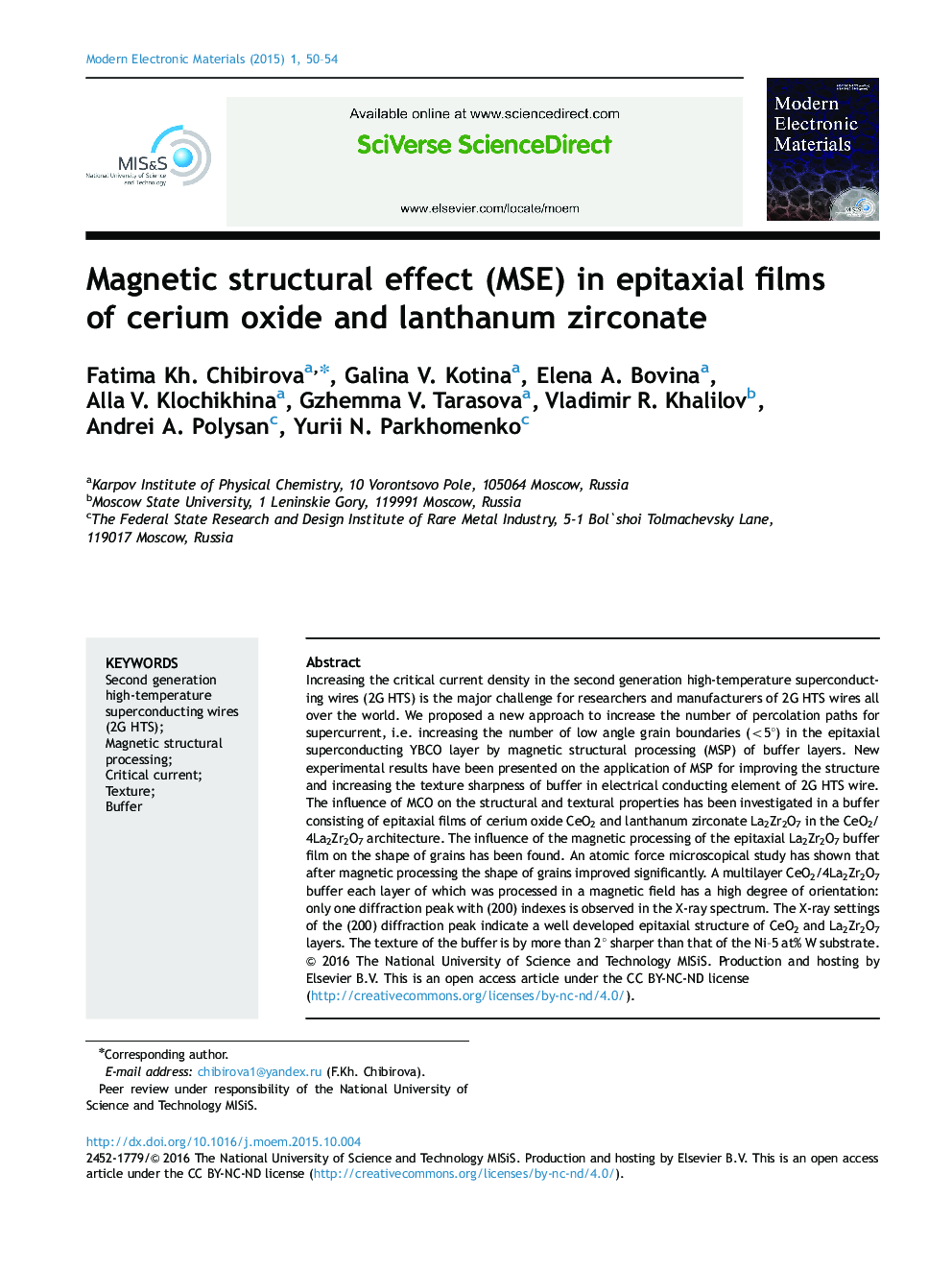| Article ID | Journal | Published Year | Pages | File Type |
|---|---|---|---|---|
| 1532963 | Modern Electronic Materials | 2015 | 5 Pages |
Increasing the critical current density in the second generation high-temperature superconducting wires (2G HTS) is the major challenge for researchers and manufacturers of 2G HTS wires all over the world. We proposed a new approach to increase the number of percolation paths for supercurrent, i.e. increasing the number of low angle grain boundaries (<5°) in the epitaxial superconducting YBCO layer by magnetic structural processing (MSP) of buffer layers. New experimental results have been presented on the application of MSP for improving the structure and increasing the texture sharpness of buffer in electrical conducting element of 2G HTS wire. The influence of MCO on the structural and textural properties has been investigated in a buffer consisting of epitaxial films of cerium oxide CeO2 and lanthanum zirconate La2Zr2O7 in the CeO2/4La2Zr2O7 architecture. The influence of the magnetic processing of the epitaxial La2Zr2O7 buffer film on the shape of grains has been found. An atomic force microscopical study has shown that after magnetic processing the shape of grains improved significantly. A multilayer CeO2/4La2Zr2O7 buffer each layer of which was processed in a magnetic field has a high degree of orientation: only one diffraction peak with (200) indexes is observed in the X-ray spectrum. The X-ray settings of the (200) diffraction peak indicate a well developed epitaxial structure of CeO2 and La2Zr2O7 layers. The texture of the buffer is by more than 2° sharper than that of the Ni–5 at% W substrate.
